Foundational Model vs. LLM: Understanding the Differences

Introduction
The global market for AI is likely to reach up to nearly two trillion USD by 2030.

This statistic illustrates the rapid growth of Artificial Intelligence (AI), with foundational and large language models playing pivotal roles. These models, trained on extensive text and code datasets, serve various functions like generating text, language translation, and creative content creation. With Gartner projecting that by 2024, 40% of enterprise applications will integrate conversational AI, grasping the importance of these models becomes imperative for data science and machine learning practitioners.
This detailed blog delves into the intricacies of Foundational Models and Large Language Models, elucidating their definitions, similarities, differences, and real-world applications. Let’s embark on an exploration of the ultimate showdown between Foundational Models and Large Language Models!
Foundational Models Vs. Large Language Models- by definition
Picture engaging with an AI-driven language model capable of crafting poetry reminiscent of Shakespeare or weaving jokes akin to a seasoned stand-up comedian. These remarkable linguistic abilities stem from two primary types of generative AI models: Foundational Models and Large Language Models.
What Are Foundation Models in Generative AI?
Large language models, as foundational models, undergo specialized training on extensive text datasets. These models are often of immense scale, boasting billions or even trillions of parameters. This vast capacity enables them to grasp intricate language patterns and execute tasks that would challenge or surpass the capabilities of smaller models. They excel in discerning statistical correlations among words and phrases, empowering them to produce text that is both grammatically accurate and semantically coherent.
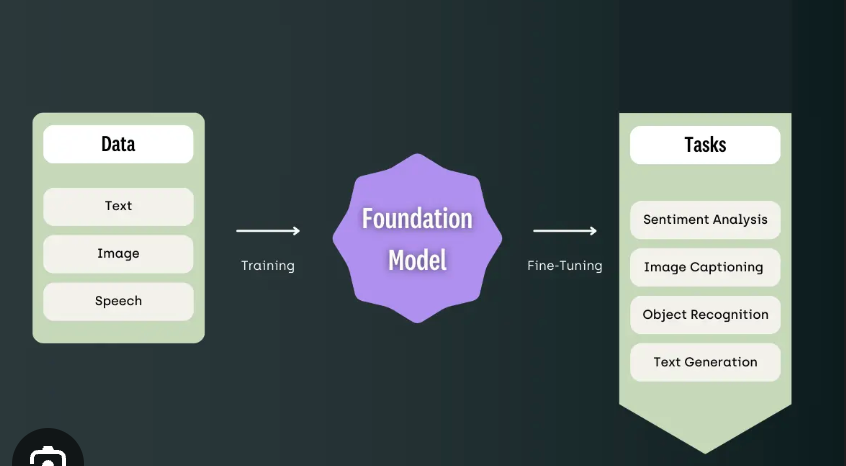
Characteristics of foundation models
Foundation models possess several key traits, which include:
- Scale: Foundation models derive their power from three essential ingredients that enable scale:
- Traditional Training: Foundation models employ traditional machine learning training methods, including unsupervised and supervised learning, or reinforcement learning from human feedback.
- Transfer Learning: Utilizing knowledge gained from one task and applying it to another, models employ transfer learning on surrogate tasks before fine-tuning for specific objectives. Pretraining, a form of transfer learning, is employed in models like the GPT-n series.
- Emergence: Model behavior is induced rather than explicitly constructed, resulting in outcomes not directly tied to any single mechanism within the model.
- Homogenization: A single generic learning algorithm powers a wide range of applications, facilitating homogenization. Many state-of-the-art natural language processing (NLP) models are adaptations of a few foundation models, according to the Stanford Institute HAI paper.
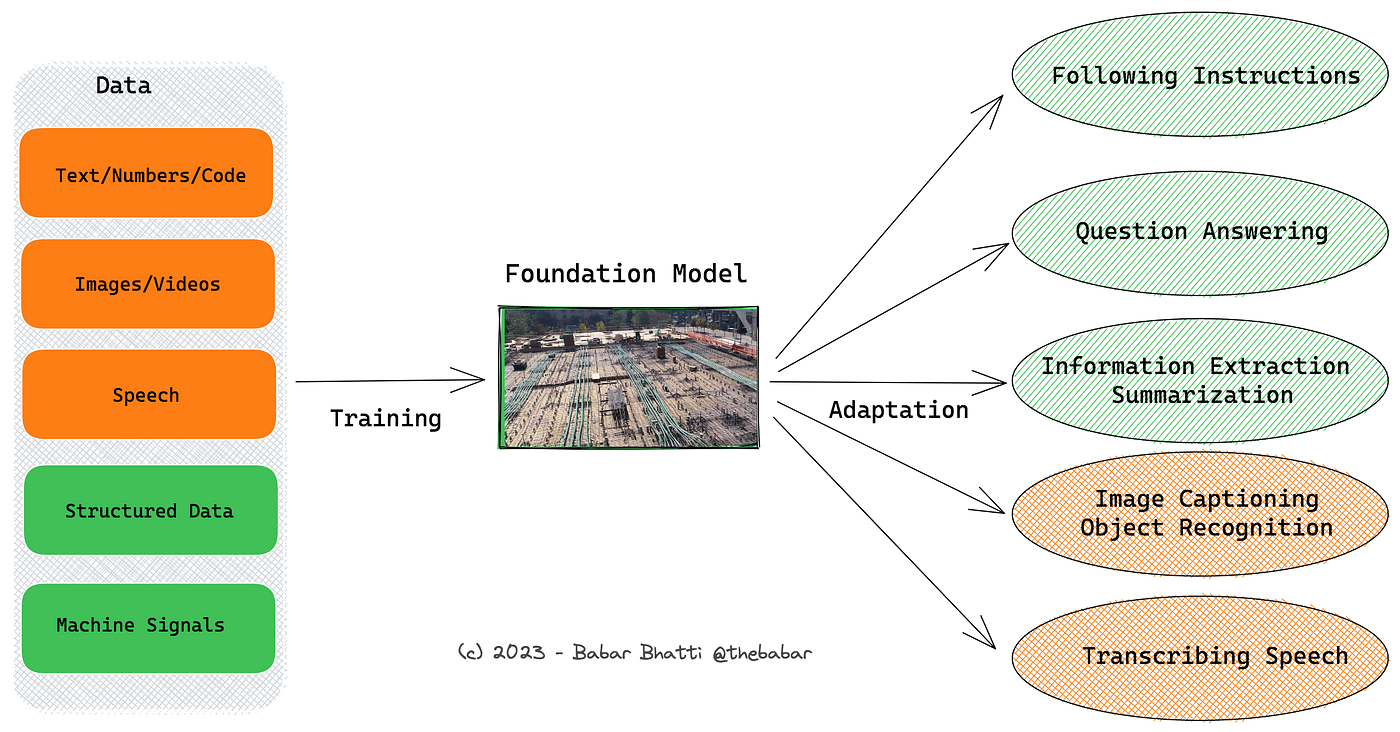
What Are Large Language Models in Generative AI?
Foundational models, known as large language models, undergo specialized training on vast text datasets. They typically possess immense scale, comprising billions or even trillions of parameters. This extensive capacity enables them to master highly intricate language patterns and undertake tasks that would pose challenges or be unattainable for smaller models. Proficient in discerning statistical connections between words and phrases, they can produce text that is grammatically precise and semantically coherent.
If you are confused what is generative AI, you can check detailed information in our blog: LLM vs Generative AI: What is the difference
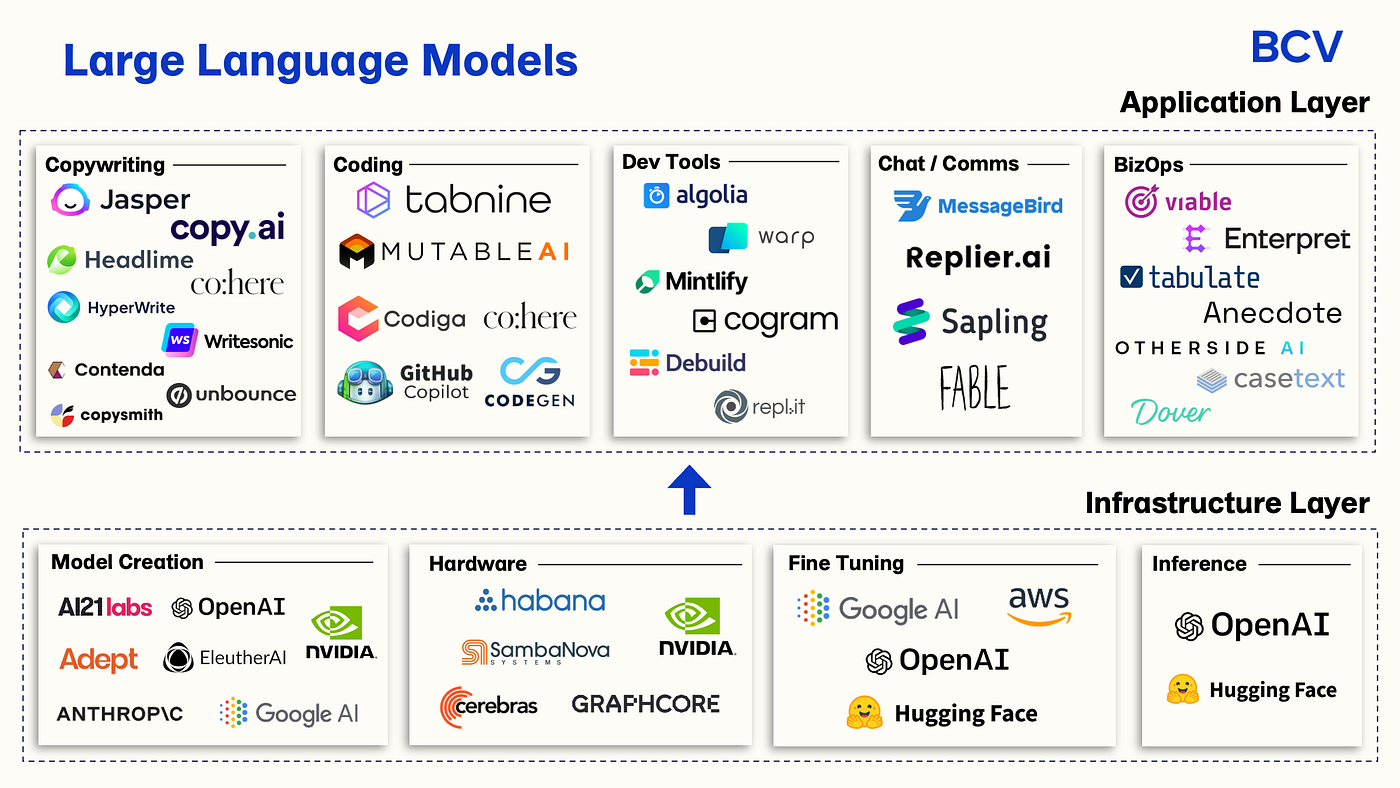
Foundational Models Vs. Large Language Models- Similarities
Foundational and Large Language Models play unique roles in generative AI, yet they exhibit intriguing parallels that underscore the advancement and sophistication of natural language processing. These shared traits underscore the interconnectedness of foundational and large language models in their impact on language processing. Let’s delve deeper into the commonalities between these AI models.
Capturing Semantic Relationships
Both model categories possess the capability to comprehend semantic relationships between words. For example, Word2Vec, a foundational model, deciphers meaningful word connections by representing them as vectors in a semantic space. Similarly, GPT-3, a large language model, demonstrates comprehension of sentence context and meaning, enabling it to generate coherent and contextually appropriate responses.
In language translation, both foundational and large language models utilize semantic relationships to accurately translate phrases from one language to another, delivering seamless and contextually relevant translations.
Advancements in Sentiment Analysis
Foundational models pioneered sentiment analysis, identifying whether text conveys positive, negative, or neutral sentiments. Conversely, large language models elevate sentiment analysis by accurately detecting emotions such as joy, sarcasm, among others, even in complex sentiments.
For instance, social media monitoring leverages both models to gauge public sentiment towards products, brands, or events. Foundational models classify general sentiments, while large language models delve deeper, discerning subtle variations in emotional responses.
Enabling Language Understanding in Chatbots
Both foundational and large language models play pivotal roles in enhancing chatbot capabilities. Foundational models establish the framework for chatbots to process user inputs and fetch pertinent information. On the other hand, large language models equip chatbots with responses that are more natural and akin to human dialogue, thereby enhancing the conversational experience.
For instance, a customer support chatbot, initially driven by a foundational model, can undergo refinement using a large language model. This refinement renders the chatbot more empathetic, contextually aware, and proficient in managing intricate queries, culminating in highly interactive customer interactions.
Foundational Models Vs. Large Language Models- Differences
Foundational models and LLMs are AI models characterized by distinct strengths and weaknesses. Foundational models are generally more versatile and require less data, whereas LLMs are more specialized and demand extensive datasets. The optimal choice of model for a given task hinges on its specific requirements. Let’s delve deeper into their primary differences.
Foundational Models Offer General Versatility
Foundational models exhibit greater versatility compared to LLMs, enabling their application across a broader spectrum of tasks. For instance, a foundational model can be utilized for tasks ranging from creating chatbots to language translation and crafting creative content. Conversely, LLMs are typically specialized in one or two specific tasks, such as text generation or language translation.
LLMs Excel in Language Training
LLMs undergo specialized training on language data, affording them a deeper understanding of linguistic nuances. This proficiency enables them to generate text that is grammatically accurate and semantically coherent. For instance, LLMs can produce text that is both creative and informative. In contrast, foundational models may not exhibit the same level of proficiency in generating grammatically correct text since they are not explicitly trained on language data.
Foundational Models Are Evolving
Foundational models are still in the developmental stage, while LLMs are more established and widely adopted. Consequently, there is greater potential for improvement in foundational models, but they may also yield less reliable results. On the other hand, LLMs are characterized by stability and reliability, albeit potentially lacking the innovation and cutting-edge capabilities inherent in foundational models.
Foundational Models Vs. Large Language Models- Examples
Let’s explore several examples contrasting Foundational Models and Large Language Models to gain a better understanding of these two models and their respective suitable applications.
Examples of Foundational Models
Here are some foundational model examples:
1. GPT-3
GPT-3, developed by OpenAI, stands out as a remarkable foundational language model renowned for its capacity to generate authentic and imaginative text. From crafting chatbots that engage in human-like conversations to composing poetry and coding, GPT-3 excels across various domains. Imagine interacting with a chatbot so lifelike that it’s challenging to discern from a real person. GPT-3 unveils a world where it shares facts, creates poetry, writes code, scripts, music, emails, and more.
2. Jurassic-1 Jumbo
Jurassic-1 Jumbo, a creation of Google AI, emerges as a language expert dedicated to mastering natural language understanding. It serves as the underlying engine behind Google Search’s unparalleled ability to comprehend user queries and deliver precise results. Jurassic-1 Jumbo adeptly navigates the complexities of language, enhancing search experiences and ensuring results align with users’ intentions. Say goodbye to linguistic ambiguities — this model effortlessly navigates human language nuances.
3. PaLM (Pathways Language Model)
Meet PaLM from Google AI, a formidable presence in the realm of language processing. Not only is PaLM expansive, but it also ranks among the most potent foundational models available. PaLM effortlessly generates text, excels in language translation, and showcases creative prowess. A captivating demonstration of PaLM’s capabilities involves instantaneously translating an entire book from English to French, with the French version seamlessly mirroring the original. PaLM emerges as the quintessential wordsmith revolutionizing language processing paradigms.
Examples of Large Language Models
Here are some examples of large language models:
1. Dolly
Dolly, developed by Google AI, stands out as a proficient LLM dedicated to understanding the statistical relationships between words and phrases. It serves as the driving force behind remarkably accurate machine translation and enhances user interactions. Dolly possesses the unique ability to grasp the context of words and phrases, ensuring precise translations even in challenging or ambiguous scenarios. This language powerhouse revolutionizes the translation landscape, facilitating smoother digital interactions.
2. XLNet
Meet XLNet, crafted by Carnegie Mellon University, a formidable LLM proficient in establishing connections between words with finesse. XLNet plays a pivotal role in excelling in question answering and adeptly handling user queries. With its innate understanding of the broader context, XLNet effortlessly tackles even the most intricate questions, eliminating the need for users to grapple with complex queries. This language virtuoso simplifies the question-answering process, making it effortless for users.
3. Llama 2/3
Model Details Meta developed and released the Meta Llama 3 family of large language models (LLMs), a collection of pretrained and instruction tuned generative text models in 8 and 70B sizes.
novita.ai has equipped with Llama 2 and Llama 3 family model:
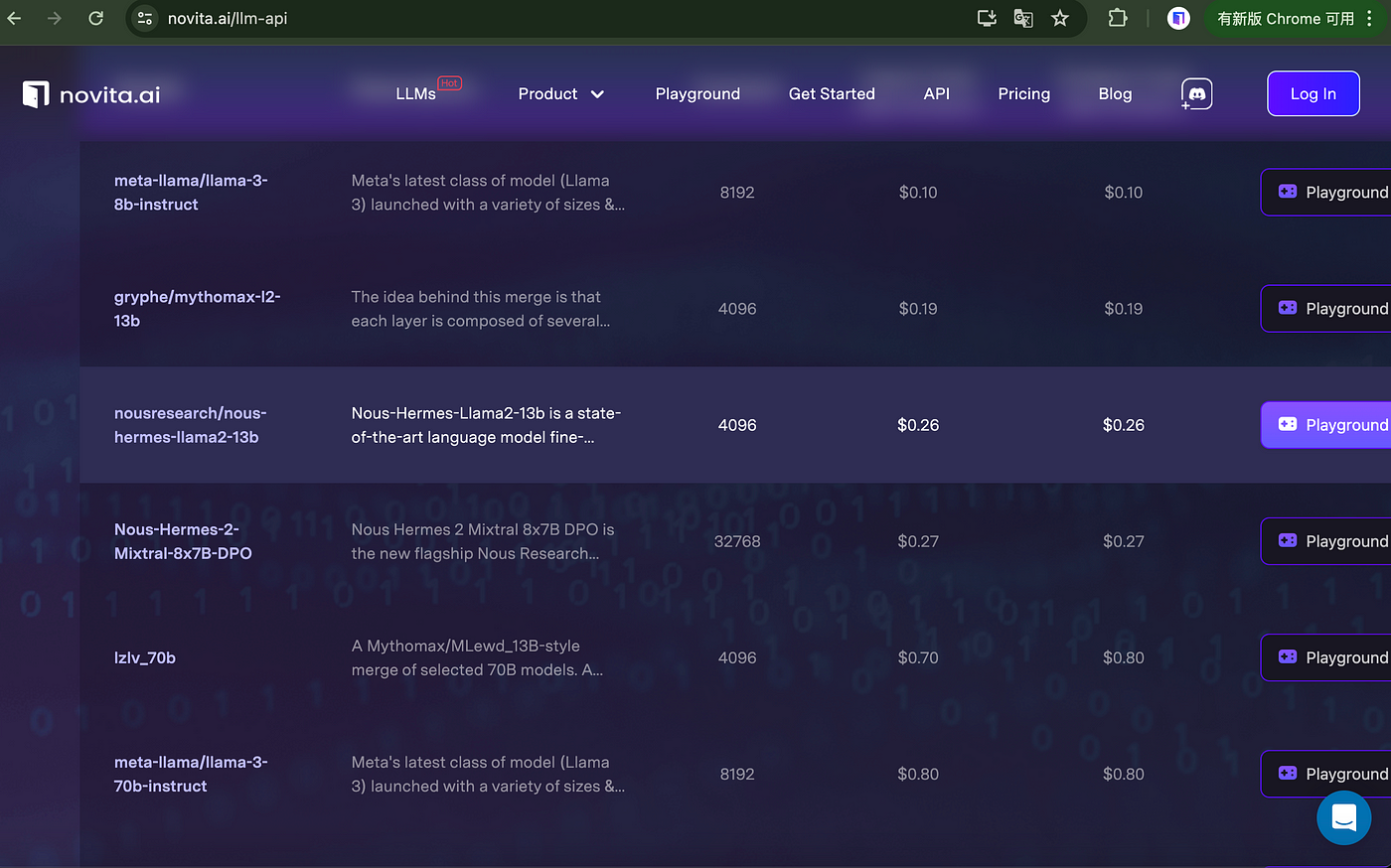
Also you can apply novita.ai LLM API to get through Llama 2/3:
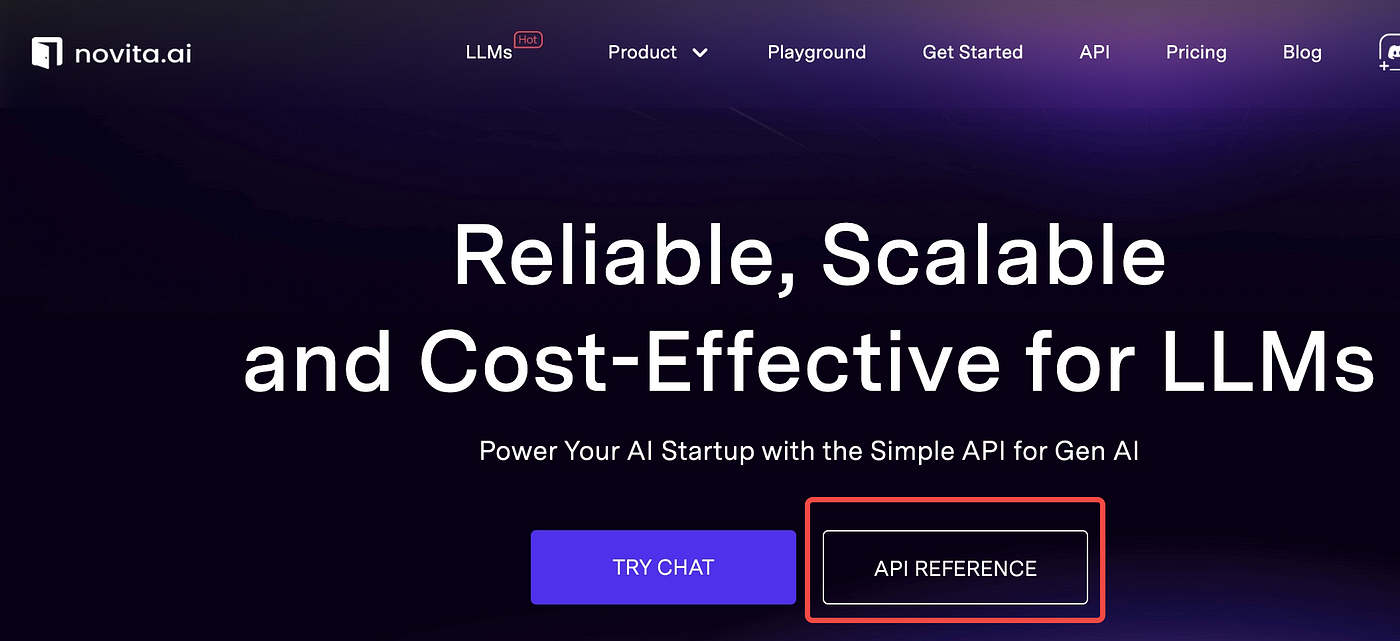
Why choose novita.ai LLM API?
- Affordable AI: High-Value LLM Hosting & Inference
- Cutting-Edge Open-Source: Serverless & Fine-Tuned LLM Hosting
- Built For Developers: Seamless Integration and Global 24/7 Support
Performance and Scalability: Which Model Fits Where?
The performance and scalability of AI models play a significant role in determining their suitability for specific tasks. Here is a comparison of the performance and scalability of Foundational Models and Large Language Models (LLMs):
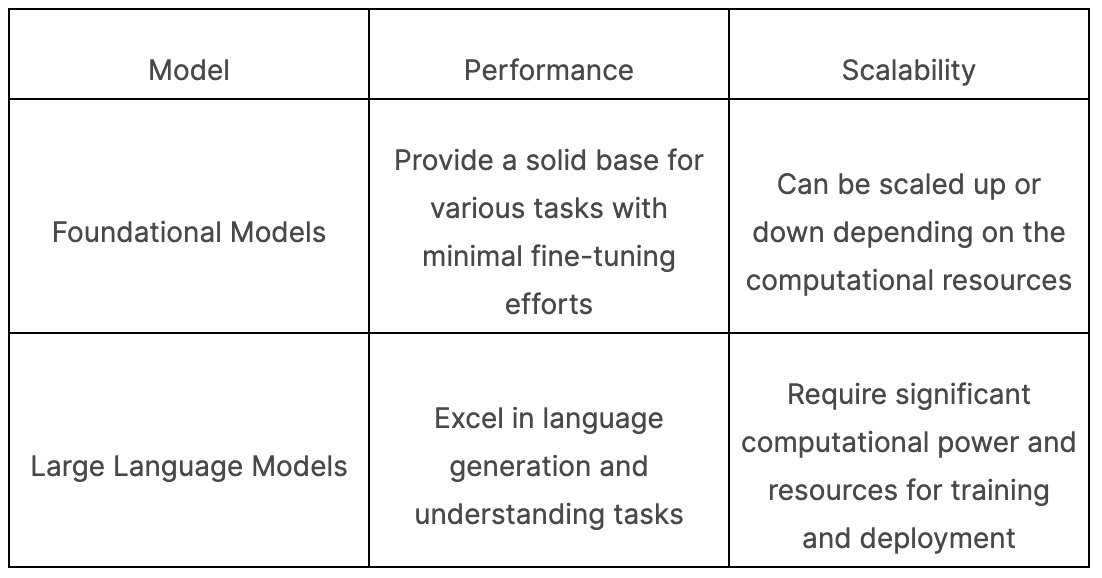
The choice between Foundational Models and LLMs depends on the specific task and the available computational resources. Foundational Models provide a solid base for various tasks, while LLMs excel in language-related tasks. Scalability depends on the computational power and resources available for training and deploying these models.
Opportunities and Risks of Foundation Models and LLMs
The application of these model architectures can yield various advantages, including:
- Cost and labor reduction.
- Enhanced productivity and time-saving in task execution.
- Improved accuracy.
- Tailored customer interactions and on-demand support.
However, it’s essential to consider legal and ethical implications when deploying these models for sensitive applications.
Further advancements in foundational models have the potential to impact a wide array of applications, including content creation, text generation/summarization, virtual assistants, machine translation, computer science code generation, fraud detection, and more. Let’s explore specific use cases in image segmentation, labeling, and the healthcare industry.
SAM for Interactive Segmentation
The Segment Anything Model (SAM) developed by Meta represents a promptable foundational model tailored for image segmentation tasks. It achieves zero-shot performance comparable to fully supervised deep neural networks. Discover how integrating SAM into your code workflow can facilitate the creation of segmentation masks.
Furthermore, SAM can streamline labeling processes, especially when integrated with comprehensive data labeling solutions such as Kili. Explore a hands-on tutorial to harness the capabilities of SAM for automated labeling.
LLMs for the Healthcare Industry
Foundation models and the responsible development of Large Language Models (LLMs) can have significant implications in the healthcare sector, impacting various applications including:
- Virtual assistants for telemedicine
- Medical translation
- Disease surveillance
- Clinical trials recruitment
- Patient triaging
- Improving medical education
- Remote patient monitoring
- Drug discovery
These advancements have the potential to revolutionize healthcare delivery and improve patient outcomes.
Conclusion
In conclusion, understanding the disparities between Foundational Models and Large Language Models (LLMs) is crucial for leveraging AI advancements effectively. Each model has distinct functionalities and applications across industries like healthcare, customer service, and education. While opportunities abound, ethical and technical challenges must be addressed to ensure responsible AI deployment. By embracing best practices and anticipating future directions, organizations can harness the potential of both models for enhanced productivity and efficiency in an AI-driven landscape.
FAQs on Foundational Models Vs. Large Language Models
1. What sets Large Language Models apart from Foundational Models?
Large Language Models distinguish themselves from Foundational Models primarily through their comprehensive language comprehension. While Foundational Models concentrate on basic linguistic relationships and word embeddings, LLMs like GPT-3 and BERT possess a broader and deeper understanding of language. They excel in contextual understanding, enabling them to generate coherent, human-like text and perform complex language tasks with greater efficacy.
2. Why are Large Language Models referred to as foundational models?
Large Language Models earn the moniker “foundational models” because they serve as the foundational building blocks for a myriad of natural language processing tasks. Their extensive training on vast text datasets equips them with a profound understanding of language, enabling them to execute various language-related tasks with enhanced accuracy and efficiency.
3. How do Foundational Models and Large Language Models differ in their approach to word embeddings?
Foundational Models employ conventional techniques like Word2Vec and GloVe for handling word embeddings, transforming words into fixed numerical vectors. In contrast, Large Language Models utilize sophisticated neural network architectures and undergo pre-training on extensive corpora to generate contextualized word embeddings.
novita.ai, the one-stop platform for limitless creativity that gives you access to 100+ APIs. From image generation and language processing to audio enhancement and video manipulation,cheap pay-as-you-go , it frees you from GPU maintenance hassles while building your own products. Try it for free.
Recommended reading
What is the difference between LLM and GPT
LLM Leaderboard 2024 Predictions Revealed
Novita AI LLM Inference Engine: the largest throughput and cheapest inference available